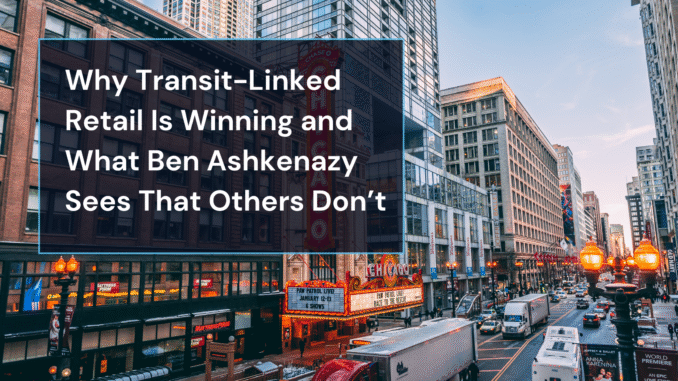
Urban retail is evolving…and fast. National tenants that once favored sprawling suburban malls are now planting their flags in locations connected to trains, buses, and walkable commercial corridors. Transit-linked retail is no longer a niche strategy. It’s becoming a nationwide movement.
A 2023 report from Smart Growth America found that retail in walkable urban places commands significantly higher rents and sees stronger long-term growth than car-dependent retail. Additionally, CBRE’s insights indicate that retail in vibrant mixed-use districts is thriving, with low availability rates and well-above-average rents, highlighting the growing demand for transit-accessible retail spaces.
Urban CRE Players Prioritize Transit and Foot Traffic
Major players are already adapting. Burlington Stores has continued expanding into dense, commuter-accessible neighborhoods, opening locations in Chicago’s Logan Square and Joliet. More recently, the brand secured a new lease at Gateway Centre in Rogers Park, a mixed-use shopping center connected to Chicago’s Red, Purple, and Yellow CTA lines.
Ashkenazy Acquisition Corporation, the New York-based real estate investment firm led by Ben Ashkenazy, facilitated the Gateway Centre deal. Known for acquiring landmark properties in major metros, Ashkenazy has sharpened his focus in recent years on sites that blend high-foot-traffic transit access with strong neighborhood integration. The firm’s approach is not just about square footage; it’s about context.
Gateway Centre exemplifies this. Located just nine miles from downtown Chicago and three miles from Evanston, the center spans 195,000 square feet and features a 659-space public parking garage. Its adjacency to the CTA Howard Station, a key transfer point for three train lines, positions it as one of the most multi-modal retail destinations in the region.
Transit-Linked Retail Anchors the Future of Urban CRE
This development strategy echoes broader trends seen in other metros. In Atlanta, developers have invested heavily in MARTA-connected sites. In Washington, D.C., mixed-use hubs near Metro stations have seen record absorption rates. And in Boston, the MBTA’s Green Line extension has triggered a wave of new retail projects across Somerville and Medford.
While many mall operators continue chasing pre-pandemic foot traffic with minimal returns, firms like Ashkenazy Acquisition are placing long bets on accessibility, density, and public infrastructure. It’s a strategy that resonates not only with consumers but with national retailers looking to capture everyday spend.
As the retail landscape evolves, one thing is clear: transit matters more than ever. Ben Ashkenazy’s firm leads a growing wave of companies reshaping urban retail by focusing on walkability, transit access, and long-term neighborhood value.
